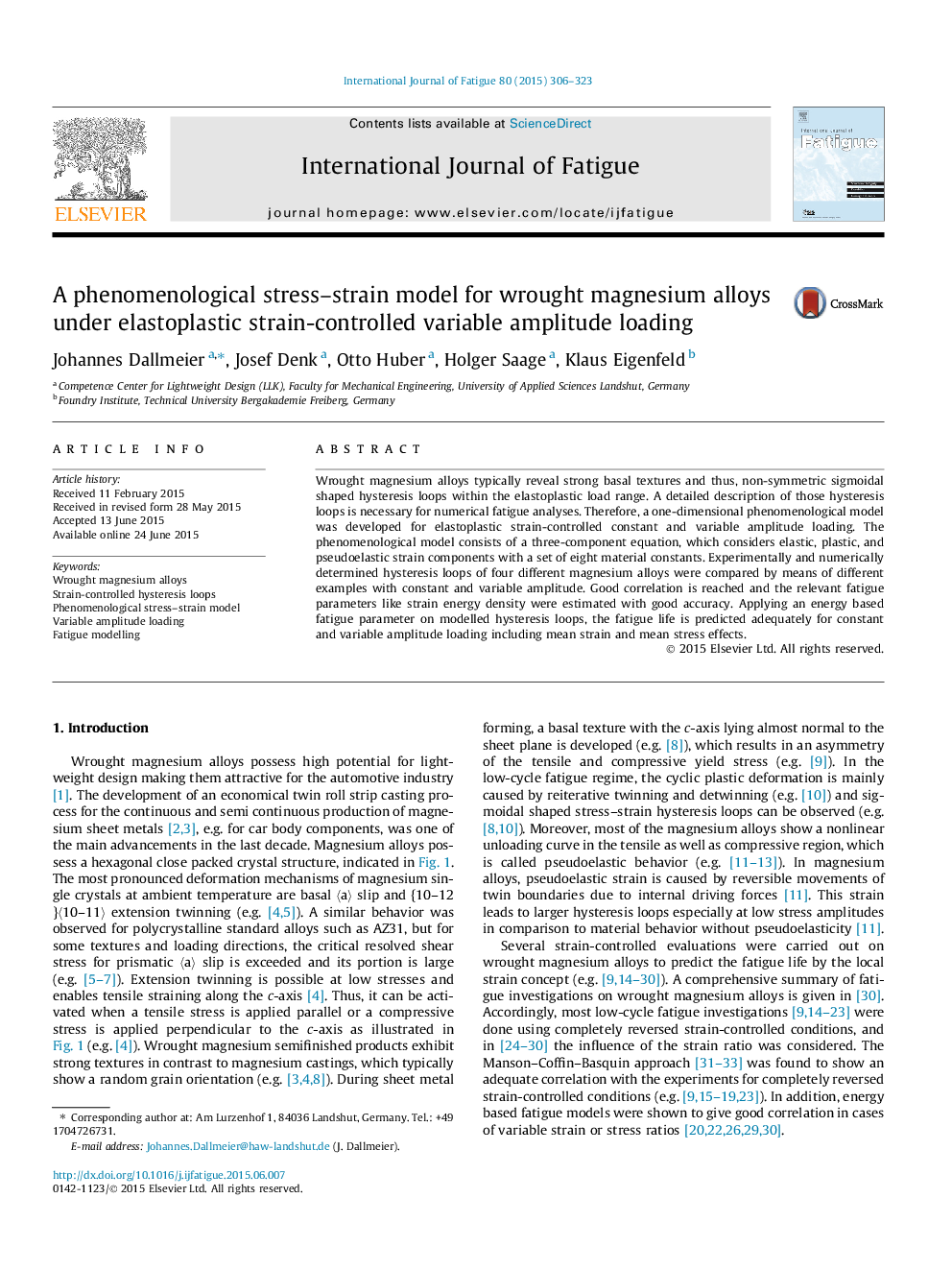| Article ID | Journal | Published Year | Pages | File Type |
|---|---|---|---|---|
| 776559 | International Journal of Fatigue | 2015 | 18 Pages |
•A new model to predict hysteresis loops of wrought magnesium alloys was developed.•The model handles elastoplastic variable amplitude strain-controlled loading.•Stress, strain, and strain energy density components can be calculated.•Experimentally determined and calculated hysteresis loops correlate well.
Wrought magnesium alloys typically reveal strong basal textures and thus, non-symmetric sigmoidal shaped hysteresis loops within the elastoplastic load range. A detailed description of those hysteresis loops is necessary for numerical fatigue analyses. Therefore, a one-dimensional phenomenological model was developed for elastoplastic strain-controlled constant and variable amplitude loading. The phenomenological model consists of a three-component equation, which considers elastic, plastic, and pseudoelastic strain components with a set of eight material constants. Experimentally and numerically determined hysteresis loops of four different magnesium alloys were compared by means of different examples with constant and variable amplitude. Good correlation is reached and the relevant fatigue parameters like strain energy density were estimated with good accuracy. Applying an energy based fatigue parameter on modelled hysteresis loops, the fatigue life is predicted adequately for constant and variable amplitude loading including mean strain and mean stress effects.
Graphical abstractFigure optionsDownload full-size imageDownload as PowerPoint slide
